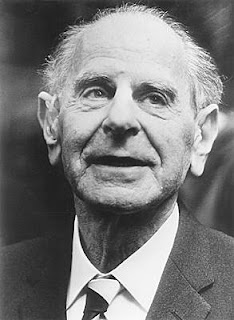 THE IDIOMATIC PROVERB in my title today is one of the strangest in the language I think. It refers to someone who wants everything. The basic idea is that having eaten your cake you no longer have any cake. So you can either have cake, or you can eat cake, but not both. I think Western Buddhists want to both eat their cake, and to have it. We often want both a full conventional life and liberation: to fully participate, and feel comfortable in saṃsāra; and escape from it. We might have a career, a family, a hobby: the "full catastrophe" as Zorba the Greek says. [1] We go to films, listen to music, and surf the Internet. And yes, we eat cake! And we might squeeze in one session of meditation a day around our busy schedule. An hour if we are lucky. And we want to be told that this is OK; that it is sufficient, that liberation is a possibility under these conditions. I've seen people become visibly upset at the mere hint that this is insufficient. But it is insufficient. Though that doesn't make you (or me) a bad person!
THE IDIOMATIC PROVERB in my title today is one of the strangest in the language I think. It refers to someone who wants everything. The basic idea is that having eaten your cake you no longer have any cake. So you can either have cake, or you can eat cake, but not both. I think Western Buddhists want to both eat their cake, and to have it. We often want both a full conventional life and liberation: to fully participate, and feel comfortable in saṃsāra; and escape from it. We might have a career, a family, a hobby: the "full catastrophe" as Zorba the Greek says. [1] We go to films, listen to music, and surf the Internet. And yes, we eat cake! And we might squeeze in one session of meditation a day around our busy schedule. An hour if we are lucky. And we want to be told that this is OK; that it is sufficient, that liberation is a possibility under these conditions. I've seen people become visibly upset at the mere hint that this is insufficient. But it is insufficient. Though that doesn't make you (or me) a bad person!By contrast I have a friend who does building work for a couple of months each summer, and uses the proceeds to spend four months on solitary retreat every year, and has done for 12 years. Another colleague is on an open ended retreat that has so far lasted 3 years. Tibetan Buddhist clergy routinely do three year retreats, and have developed facilities for just this purpose. Now if I had to guess at where liberation was likely to occur I would have to say that it would be amongst this second group - the serious practitioners who arrange there life around their practice and not the other way around.
We need to be realistic. There's no shame in leading a lifestyle that is reasonably ethical and wholesome, but which lacks the intensity of practice that might be conducive to liberation. That kind of lifestyle is admirable in many ways, and preferable to an unexamined, hedonistic or vicious life. But it is not realistic to think that a lifestyle which is not conducive to liberation might by a fluke allow us to be liberated. It's pretty unlikely. Liberation seldom spontaneously arises in someone. We may have an insight which turns us around, makes us rearrange our lives, and reorder our priorities, as often happens for instance when a loved one dies; but this kind of spontaneous insight requires nurturing and cultivating if it is to bear fruit. And in a busy life it will be lost quite quickly. It's down to setting up the right conditions.
I was recently leading some study with my Order peers and pointing out that in texts which feature the spiral path or lokuttara paṭicca-samuppāda [2] the stage of ethics is characterised not by following rules and precepts, but by guarding the gates of the senses (indriyesu guttadvāra), wise attention (yoniso manasikāra), non-intoxication with sense objects (appamāda), and restraint (saṃvara). I suggested that this was a far more demanding approach to ethics than we normally take on. These models effectively suggest that we approach ethics as a trial run for the wisdom stages of the path: i.e. disenchantment (nibbidā) and turning away (virāga) which are the conditions for liberation (vimutti). Morality in this case is acting as if we are disenchanted with the delights of the senses, and a deliberate, even mechanical, turning away from them. The texts suggest that the results of these practices are a clear conscience (avippaṭisāra), faith (saddhā) and importantly joy (pamojja). Ayya Khema has said that joy is an essential quality for meditation. With joy we are ready to begin training in and becoming skilled in the jhānas which prepare the mind for seeing through (vipassanā [3]) the delights of the senses.
All this is demanding and to be successful requires considerable persistence and effort, because it goes against our natural inclinations. Frankly, it isn't really consistent with how most of us live or want to live. Therefore it is hardly any surprise that so few of us are confident in jhāna, able to enter jhāna at will, and move easily between the levels. I know people who are, but they are the ones I mentioned above who organise their lives around their meditation practice and dedicate long hours to practice. Of course developing familiarity with jhāna is only a preparation for vipassanā practices. Jhāna can help loosen the grip that intoxication with sense pleasures has on us, but other practices—reflections on the nidānas, on impermanence etc.—are, according to tradition, what set us free of that intoxication permanently.
I'm more focussed on study, on learning and reading Pāli, and on trying to understand Buddhist doctrines and the history of Buddhist ideas. My life, while not given over to vice, is not directed towards prolonged and intense meditation. But I make my contribution to a community of practitioners and help to create the conditions for bodhi to arise in someone; mostly like someone else. And after all it need not be me. Serious meditators do need a support system. As long as I help to set up supportive conditions for those who can make use of them, I feel I'm making a valuable contribution. My colleagues seem to confirm the usefulness of my work, so that's a relief!
We have different temperaments and can't all practice with equal intensity. And many of us come to the Dharma already encumbered with serious responsibilities. We can't both have our cake and eat it. I suggest that we need to think in terms of serving - making cake if you like. Not only serving something greater than ourselves (in my case the Triratna Order) but serving those members of our community who will benefit the most from our support. This in turn, unlike in the financial economy, has a trickle down effect and benefits the entire community, and we might say the entire world (if that is not too grandiose).
~~oOo~~
Notes
- The full quote seems to be "Am I not a man? And is not a man stupid? I’m a man. So I married. Wife, children, house, everything. The full catastrophe." The source is less certain and it may be from the movie Zorba the Greek directed by Mihalis Kakogiannis, rather than the novel Life and Politics of Alexis Zorepa written by Nikos Kazantzakis; though Kazantzakis contributed to the movie screenplay as well. Note that this original version of the idea lacks the kind of positive spin given to it by John Kabat Zin.
- My comprehensive list of such texts and examination of them, along with diagrams showing the various links and nodes is here: http://www.jayarava.org/dependent-arising.html
- Although we usually translate vipassanā as 'insight' in many ways this is a poor choice. The vi- in vipassanā does not indicate seeing inwards, but seeing through, and seeing through is closer to what we are trying to achieve. As I've said before Buddhism is not necessarily about looking inwards, not just navel gazing. Here the vi- is cognate with the Latin 'dia-' as in diaphanous which literally means 'appearing through'. A Latin translation of vipassanā might be diavisionem. We might call a moment of vipassanā a 'diaphany', on the model of epiphany.



